Nesactium was an ancient city, the capital of the people called Histri, and then a Roman town after the conquest in 177 BC. Today, the place is an archeological park with a well-kept lawn in between ancient walls and some more recent reconstructions of those walls.
The protagonists of today's post were all photographed there. Surrounded by short green grass and layers of history.
I visited Nesactium at least four or five times in the first two weeks of November. On one of those occasions, I focused only on daisies and the small arthropods that were crawling, resting, or feeding on them.
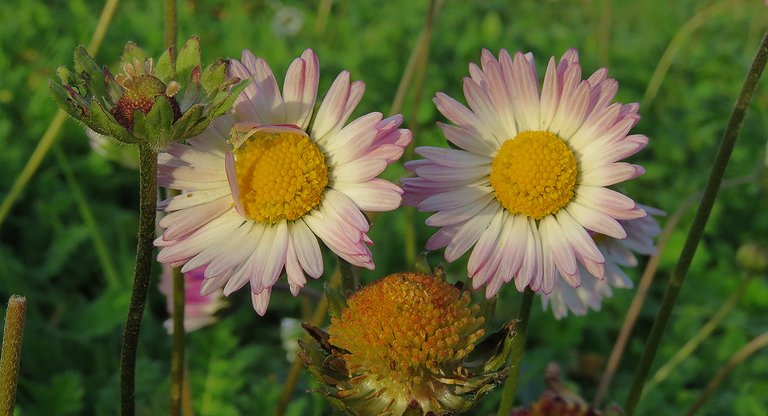
These are the Bellis sylvestris. Commonly known as southern daisies. Hope you like them ...
... because you'll see tons of them here.
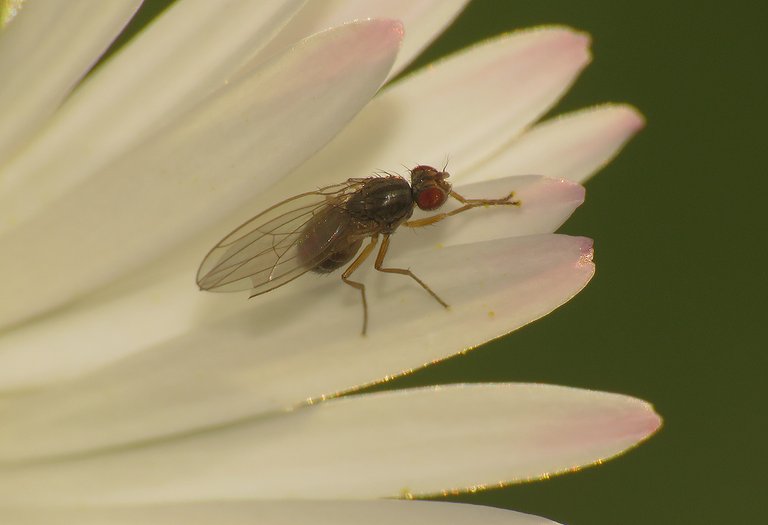
Hope you like the insects as well ...
... because you'll see plenty of those too.
This was the first species I encountered. Can't tell you its name, but since is obviously a leafhopper, the family must be Cicadellidae. This is a young, wingless nymph ...
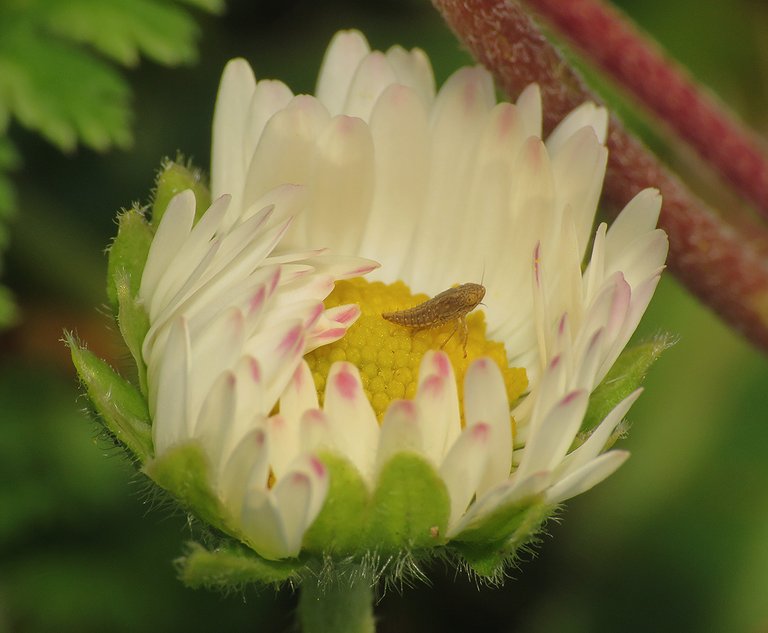
... and it looked great in the center of the flower.
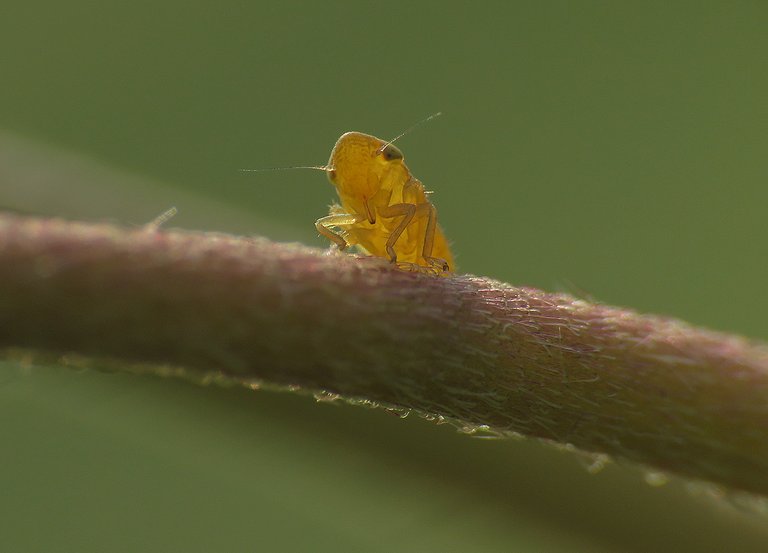
Another leafhopper was resting on the stem of another flower not far from there. Backlight gave it a semitranslucent, amber look in this photograph. The insect was quiet for a minute or two, and then ...
... the leafhopper nymph suddenly started cleaning itself. The movements were very fast and kinda frenetic so I had to use the flash to freeze them in a still image.
As the name suggests, leafhoppers are capable of sudden long jumps that make them disappear in a fraction of a second. The nymph shown in this last set of six photographs soon jumped away and disappeared in the grass, so I continued in search of whatever else the daisies had to offer.
Here you can see another jumping insect. A grasshopper.
This Pezotettix giornae, a species from the Acrididae family ...
... was resting on the bent stem of another daisy. Five or six meters further.
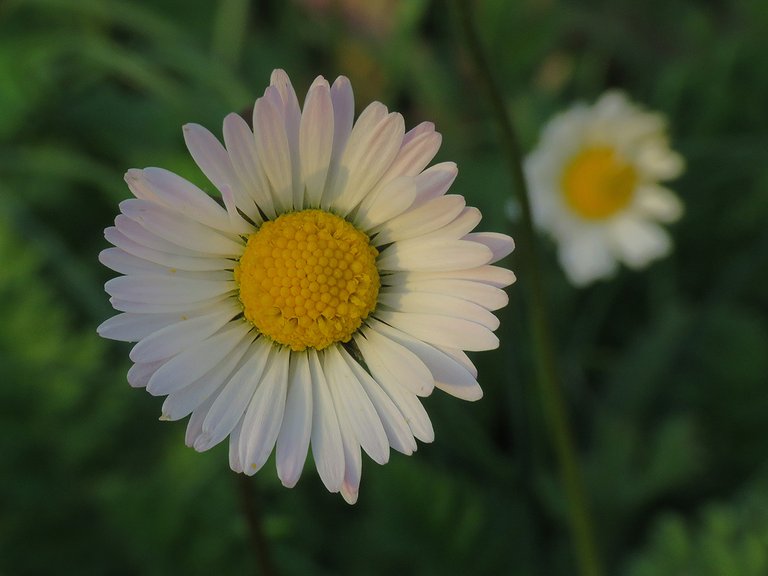
The petals of most daisies were completely or almost completely white. Some of the petals on the flower in the foreground of this photograph had a bit of very light pink on the top.
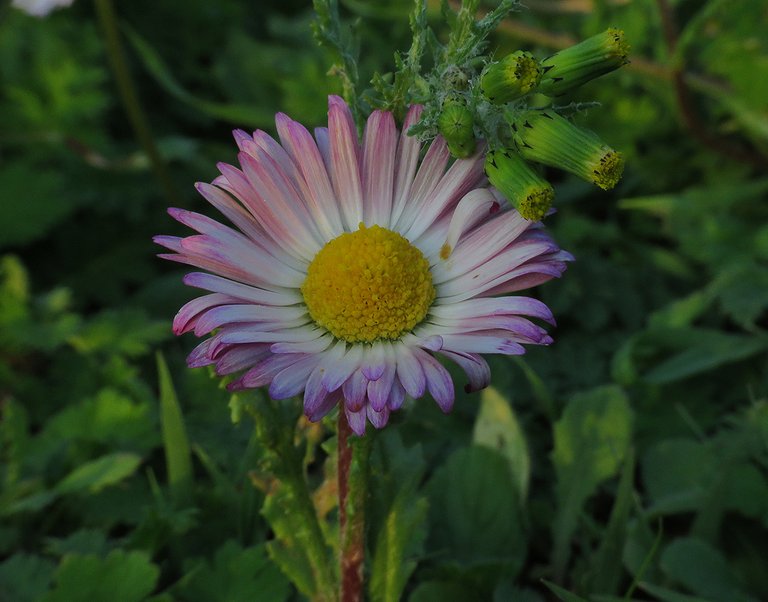
On this daisy, the pink is more pronounced and you can see a bit of red or magenta too.
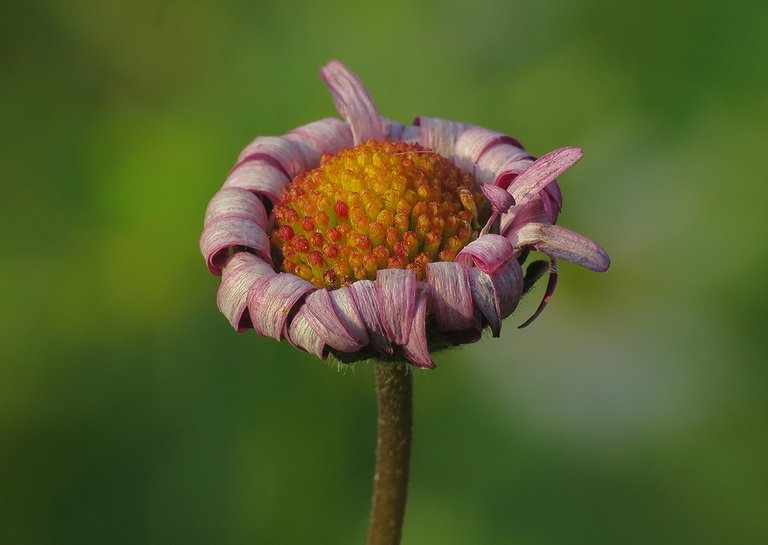
The pink-magenta petals of this flower ...
... have begun to curl and shrivel. They are almost ready to fall.
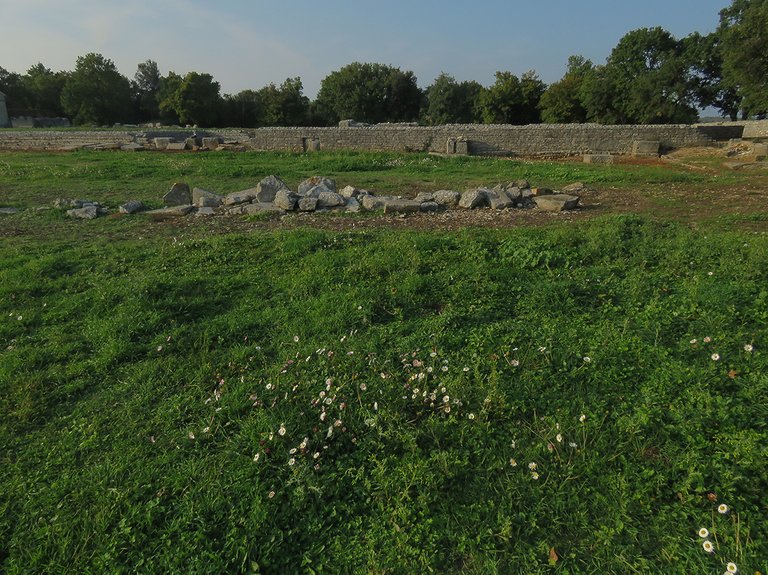
After some more walking around the lawn ...
... I came across a daisy that has lost about half of its petals. The ant in the center of this photograph ...
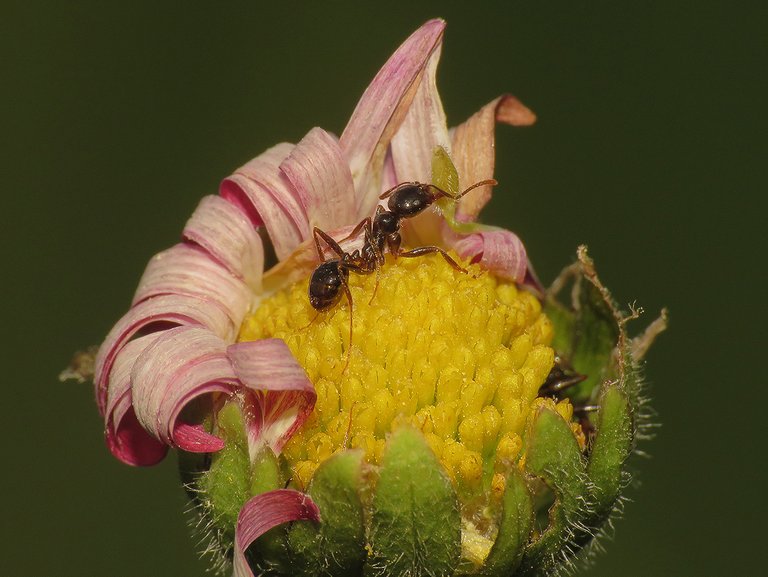
... was busy transporting one of the remaining petals ...
... and I was busy following the action with the camera.
While on the flower, the ant was dragging the petal ...
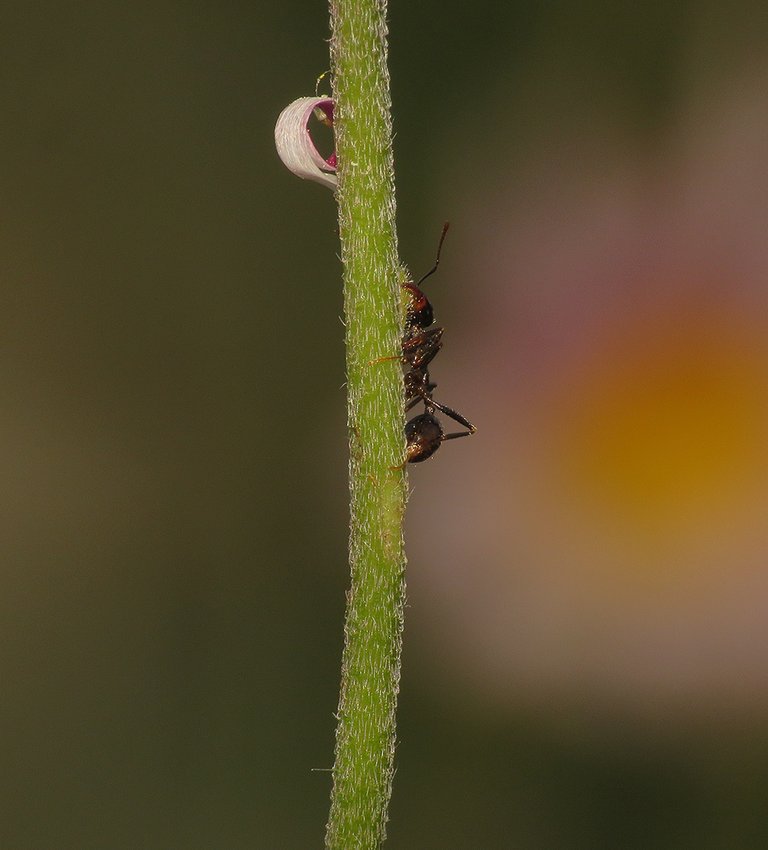
... but once on the stem of the plant, a different technique was required. At first, he was climbing down the stem in the same position, head on the top, but then ...
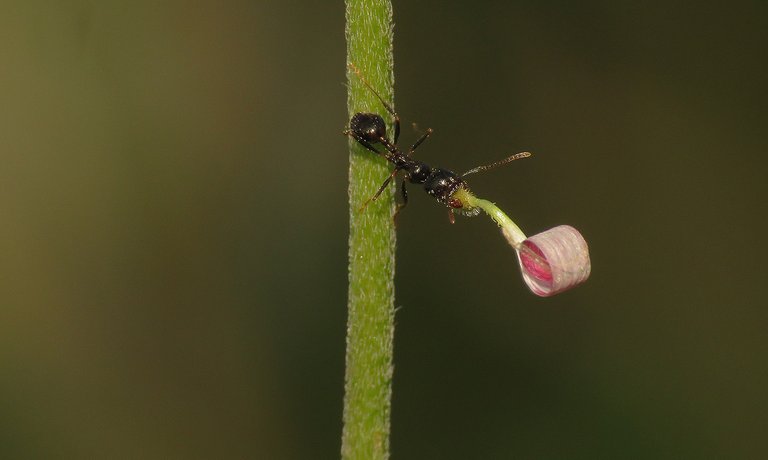
... the ant turned around with the petal lifted in the air ...
... and continued crawling down head first. It looks that a tiny fruit is attached to the petal. I don't know how all the reproductive stuff works in the case of southern daisies, but yeah, the thing at the end of the petal definitively looks like some kind of fruit or a seed.
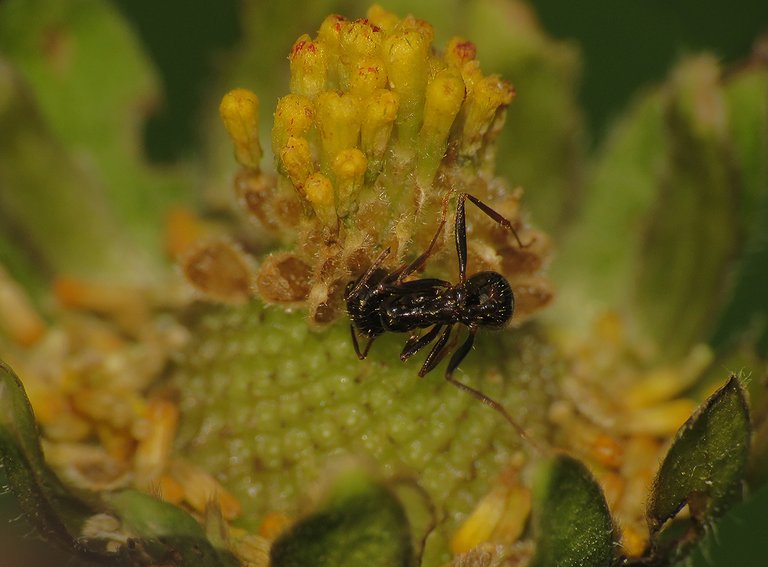
The flower shown in this photograph has lost more than just petals. The ant was dismantling the last removable stuff in its center.
When it comes to the name of the species, all the ants, those shown and those to be shown soon in this post, are the Messor capitatus workers.
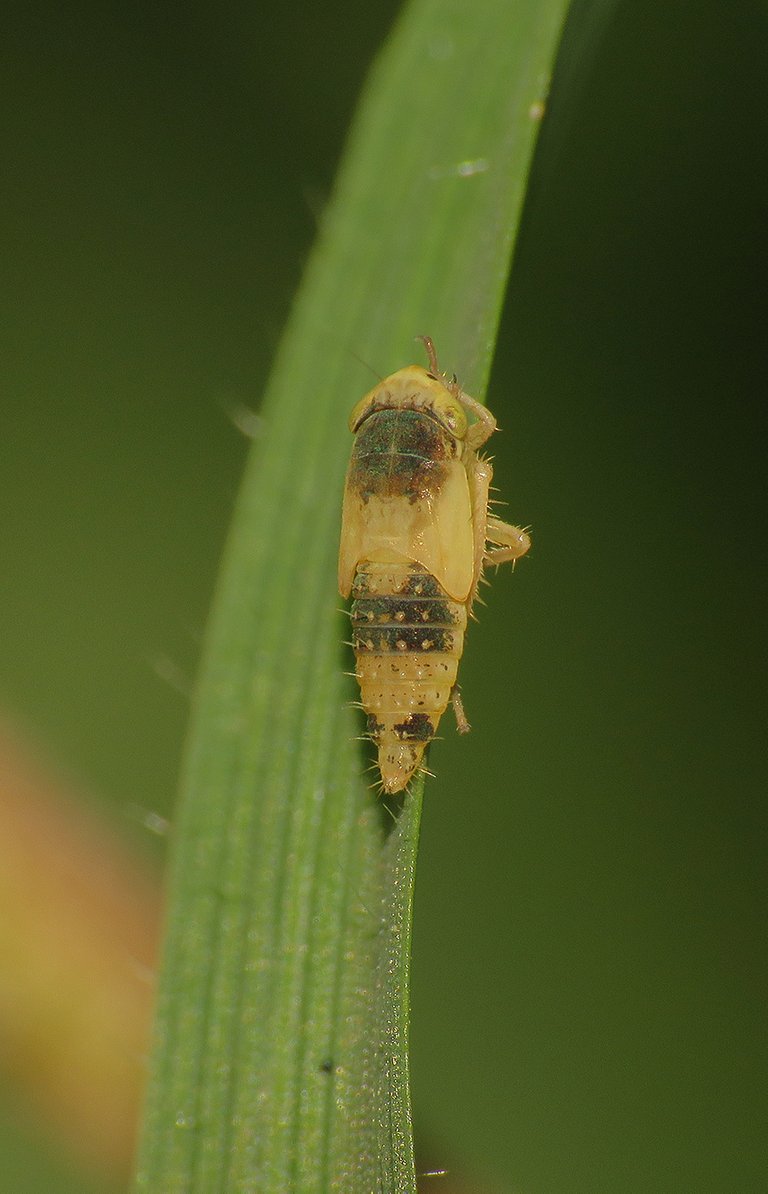
Here you can see another leafhopper nymph. This one was resting on one of the many blades of grass under the flowers. Just like before, I don't know what species is this nor how will the insect look as an adult. But since it looks different than those Cicadellidae nymphs shown earlier in the post, I'll say that it's a different species.
Many fragments of the decaying Bellis sylvestris flowers sooner or later end up falling on the surrounding vegetation. In this case, on the leaf of the Geranium rotundifolium plant.
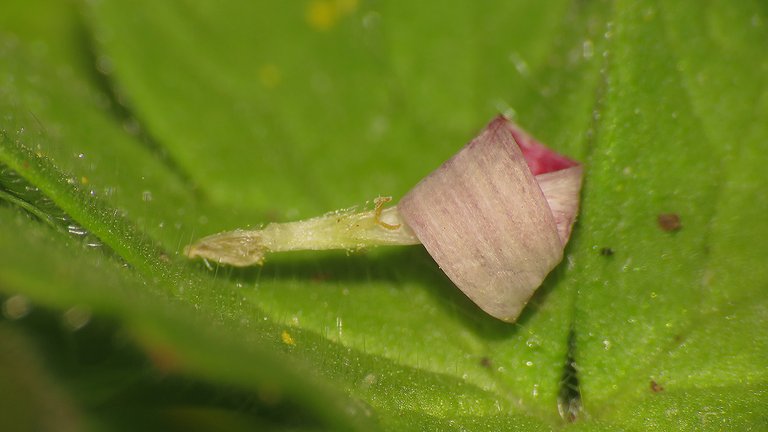
This petal was laying on the same kind of leaf.
A bit later, while walking slowly, more or less in circles, I noticed a fly on the white petals ...
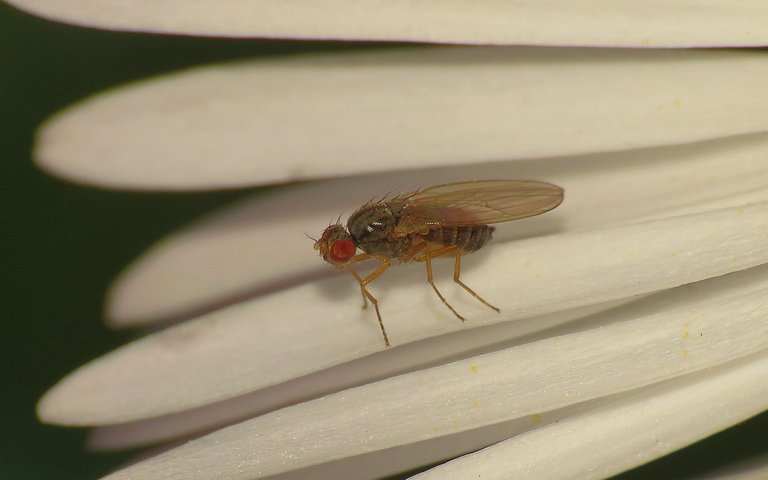
... so I stopped to take a couple of shots.
Not far from there, another small fly of the same kind was feeding on nectar produced by the tiny yellow flowers that form the central part of the composite flowerhead.
On yet another flower, the third fly that looked exactly like the previous two was cleaning its mouth after the meal.
These are all members of the same species. The Scaptomyza pallida from the Drosophilidae family.
Here you can see just another daisy. One of the many that grew on the lawn of the archeological park. The shot was taken through the macro lens, and the depth of field is pretty shallow, so you can't see much of what's around and behind the flower. In the following photograph ...
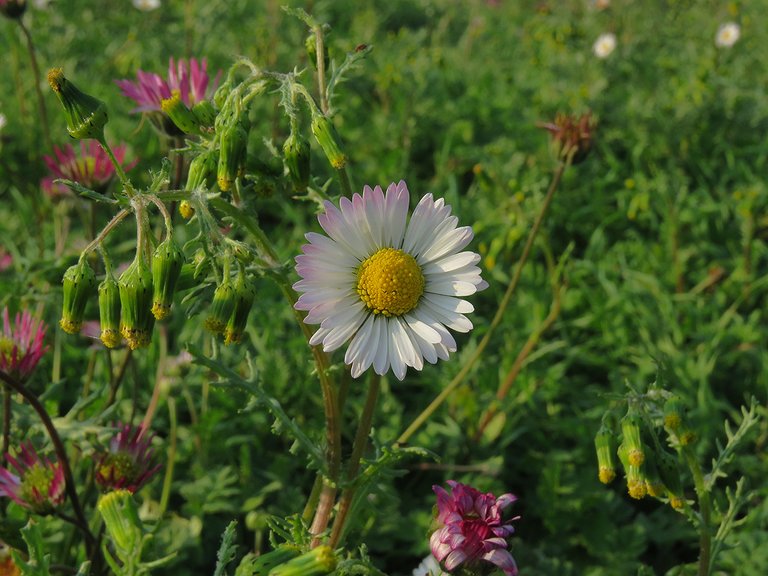
... you can take another look at the same flower. I removed the macro lens adapter for this photograph, so you can see more of the surroundings. If you explore a bit the picture, you may notice clusters of hanging, cylinder-shaped flowerheads left of and slightly above the daisy. After taking this photograph, to explore them better ...
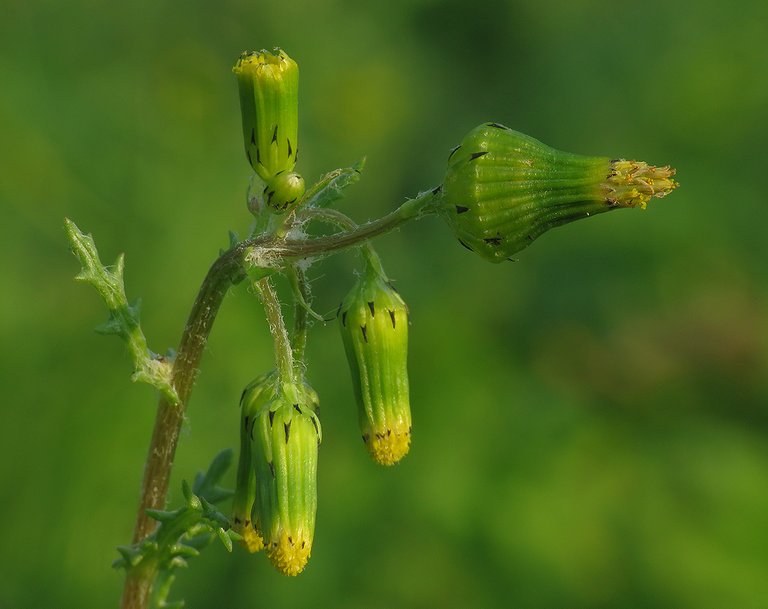
... I used the macro view again.
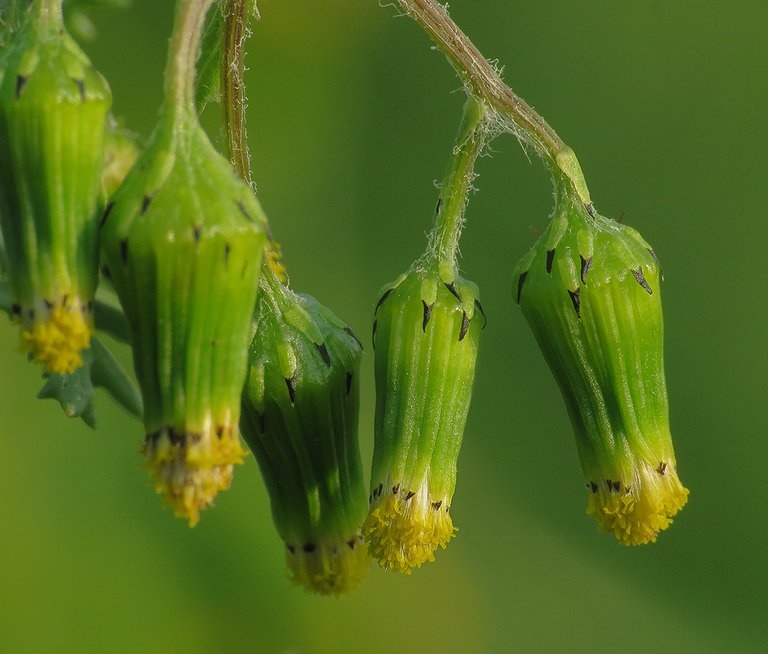
These are the flowers of the Senecio vulgaris plant.
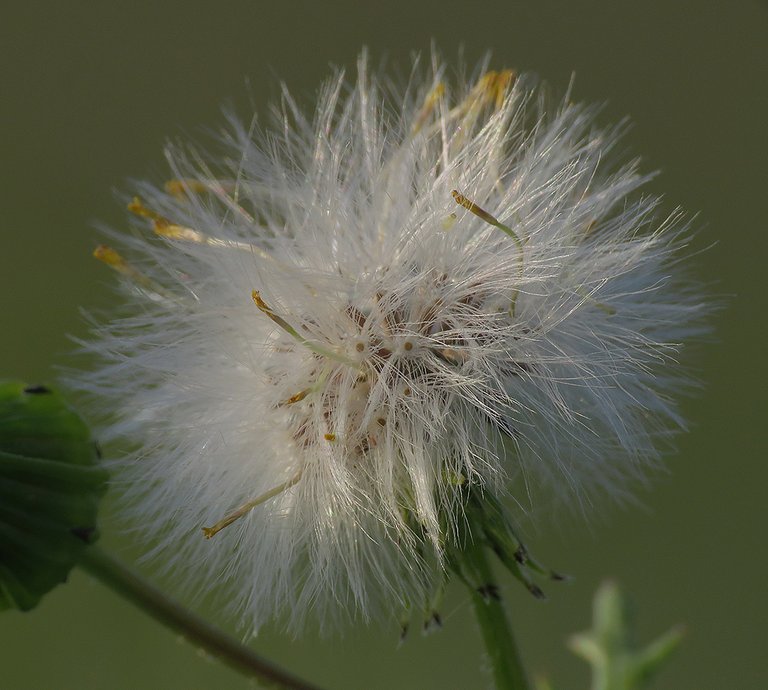
Here you can see the seeds of the same plant. They are shaped to be dispersed by the wind.
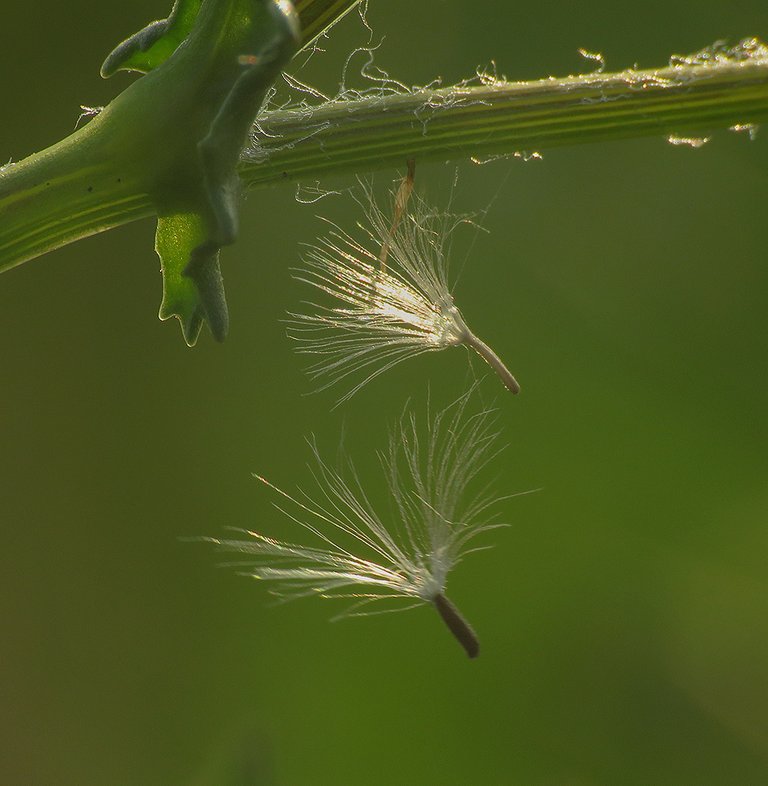
Some of them didn't fly very far. These two were hanging from the stem of the neighboring Senecio vulgaris.
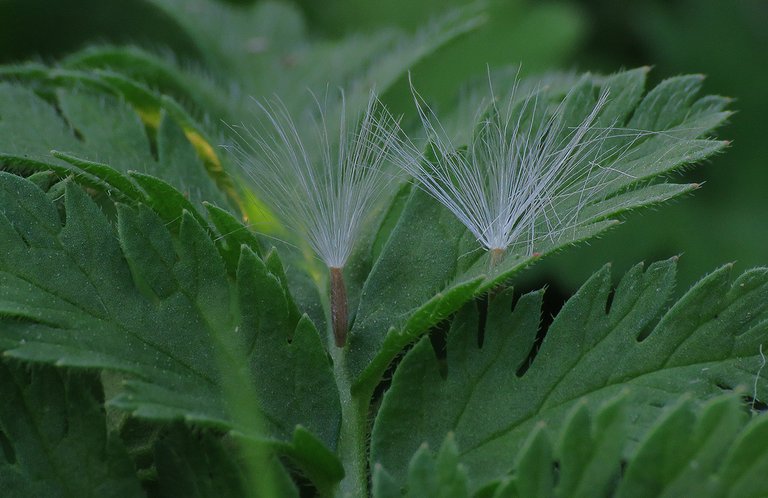
These other two were photographed a meter or two from there.
In this enlargeable picture, you can take another look at those two parachute-like seeds hanging from the Senecio vulgaris. Both seeds were moving on the gentle breeze but the lower one was twirling pretty fast from time to time. The shutter speed I used to get this photograph was fast enough to freeze the upper seed, but the lower one is motion-blurred, which I like because the still image conveys a bit of the motion that way.
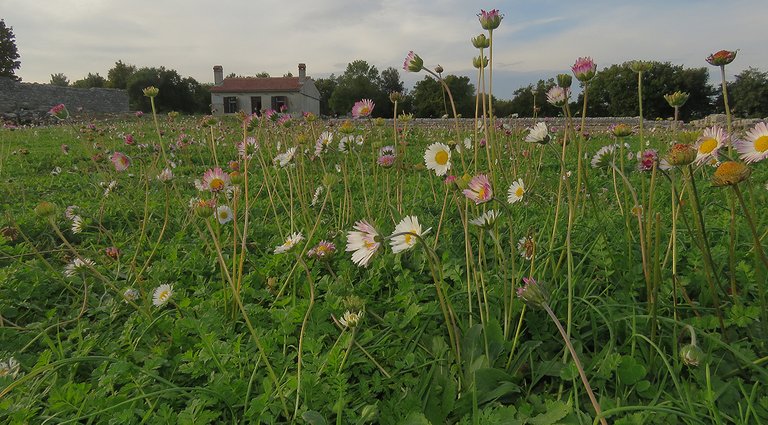
Here you can take a break from the macro view and enjoy the scenery with daisies in the foreground. In the following photograph ...
... the focus is on the small things again.
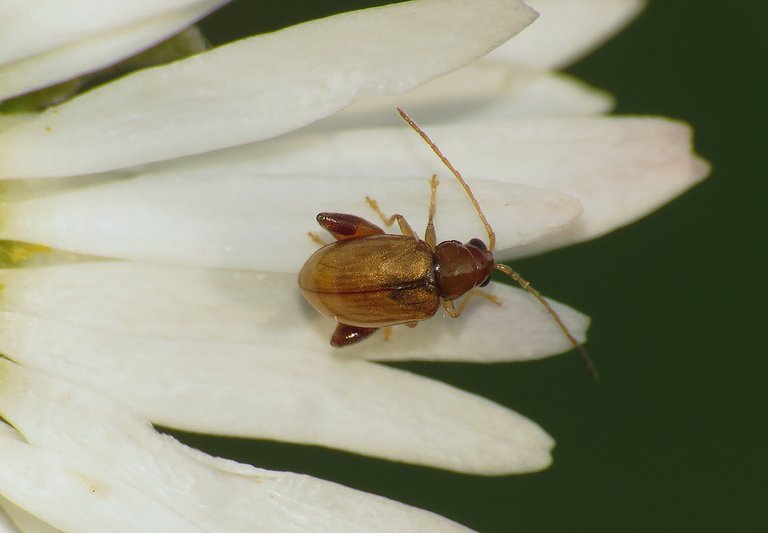
This is the Longitarsus exsoletus, a flea beetle from the genus Longitarsus of the Chrysomelidae family.
In these two photographs, the beetle is feeding on pollen and the soft yellow florets of the southern daisy flower.
On another flower, I found a beetle and a fly. Both of them were cleaning their legs when this photograph was taken.
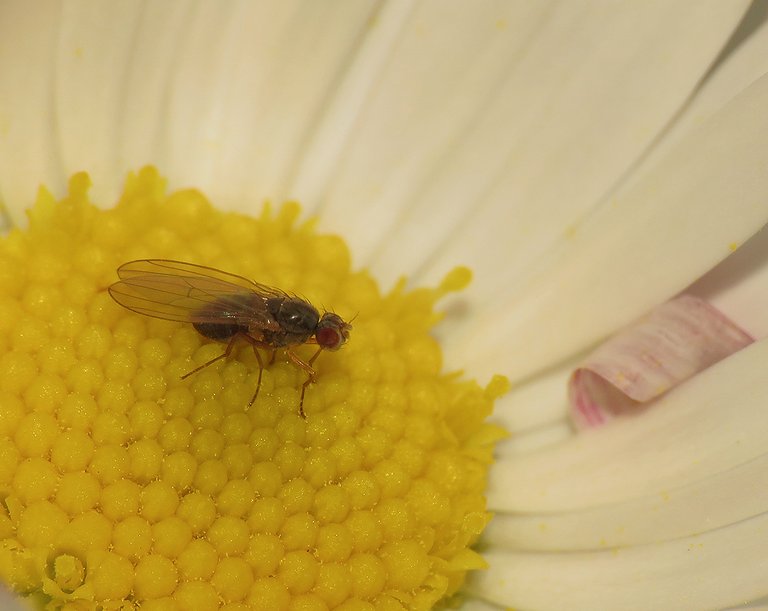
The fly was in the yellow center of the daisy ...
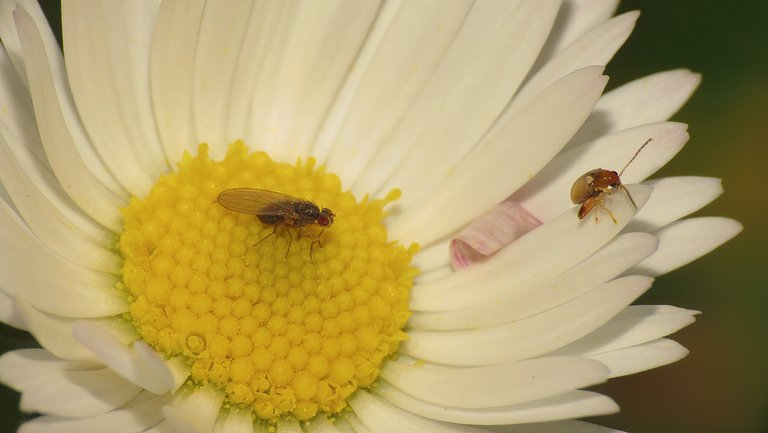
... and the beetle, on the top of one of the many white petals. The fly is the Scaptomyza pallida, and the beetle is the Longitarsus exsoletus, of course.
These three photographs were taken a minute or two later when the beetle decided that personal hygiene is done.
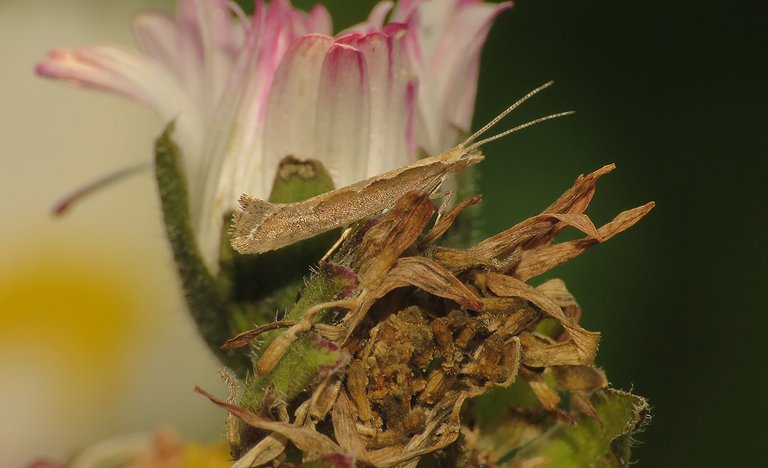
If you take a good look at this photograph, you may see a small moth camouflaged on what looks like dried-out petals of a flower that has definitively past its prime.
This is the Plutella xylostella ...
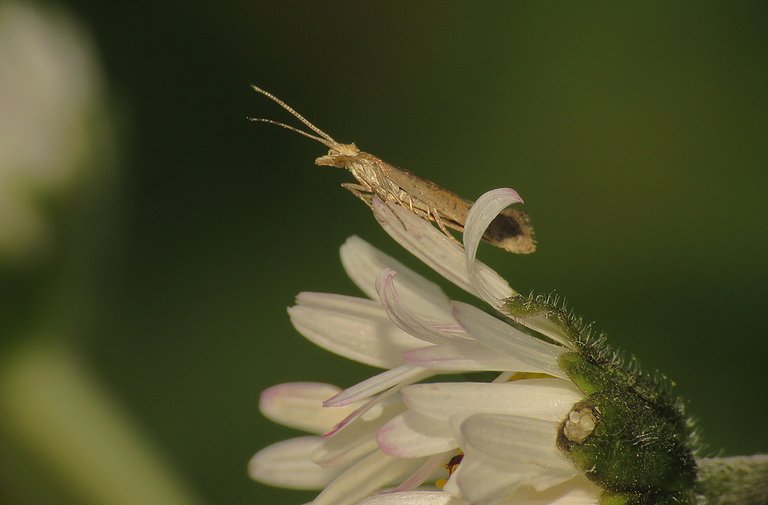
... commonly known as the diamondback moth or the cabbage moth ...
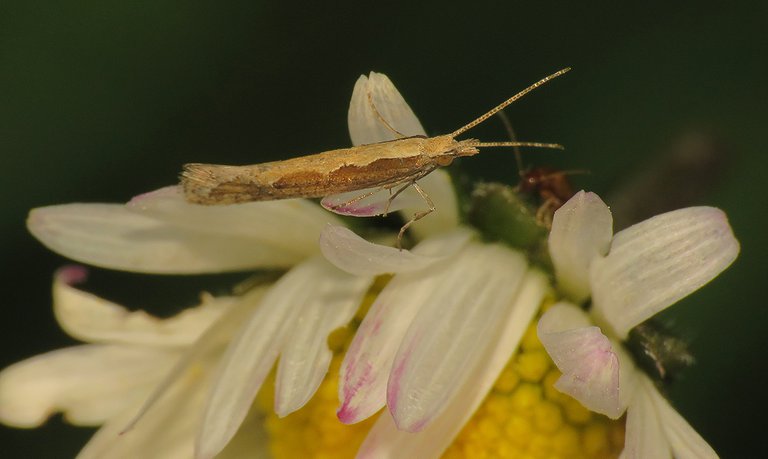
... a species from the Plutellidae family.
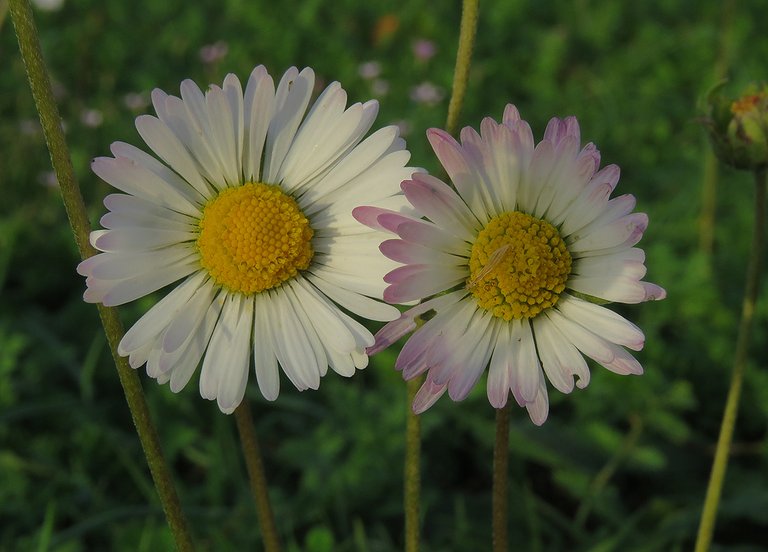
Most of the daisies I encountered on that occasion were completely developed or on their way to decay ...
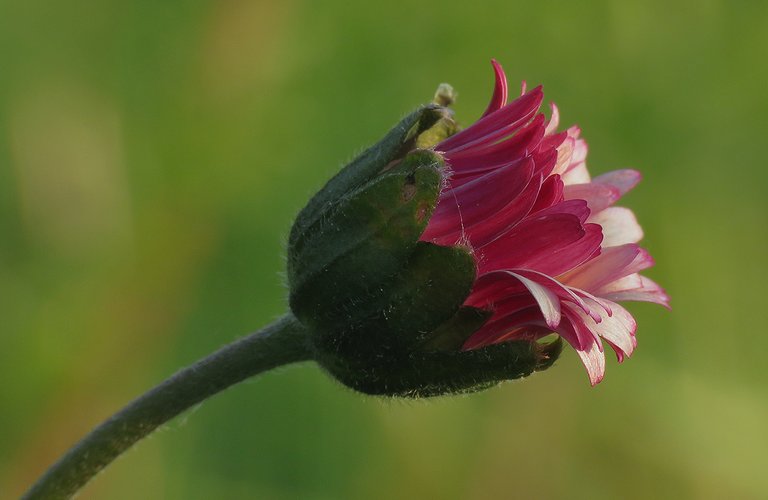
... but here you can see one of those that haven't spread their petals yet.
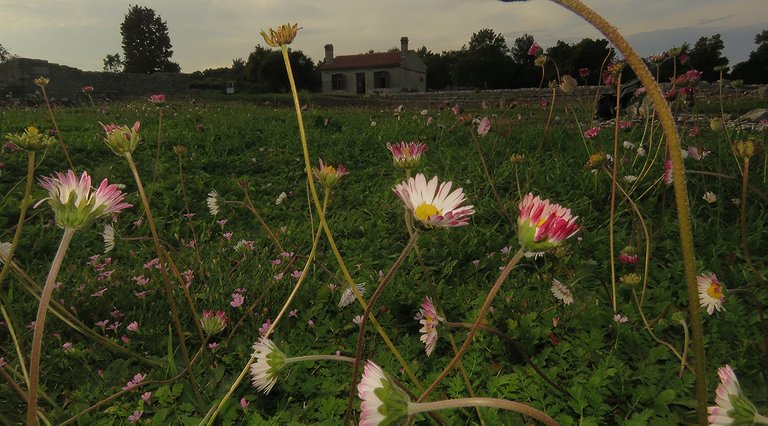
When I visited Nesactium a couple of weeks earlier, on the 21st of October, some beautiful white mushrooms were growing on the lawn. The following link can take you to the post published the same day, the 21st of October, if you wish, so you can see how the place looked when the mushrooms were there.
https://ecency.com/hive-151327/@borjan/mushrooms-in-the-ancient-city
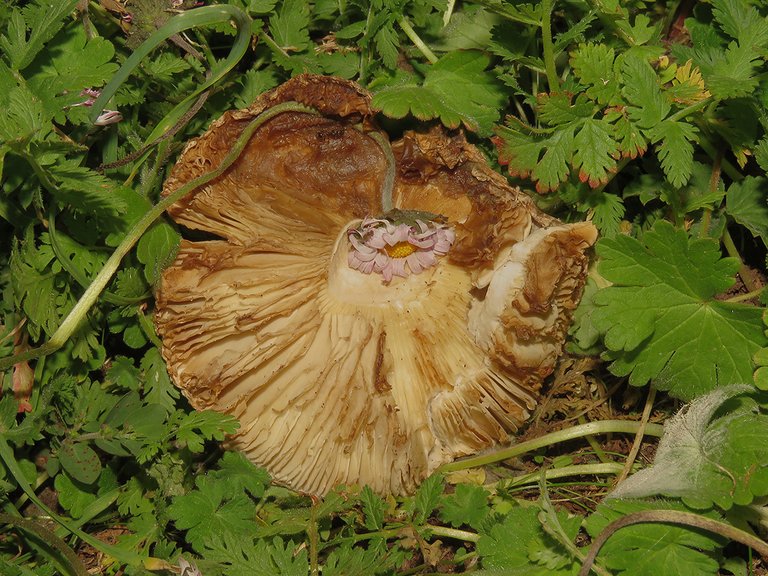
Until the 9th of November, most of the mushrooms disappeared.
Only a few rotting fruiting bodies remained ...
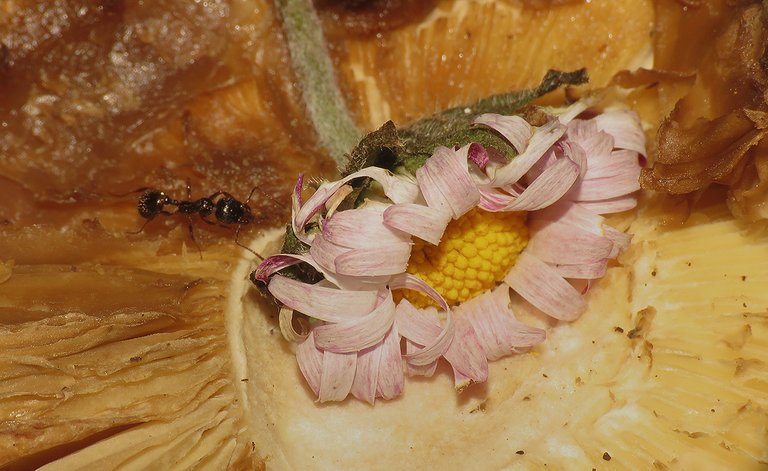
... and one of those decaying mushroom caps got somehow melted together with a withered daisy.
Two Messor capitatus ants ...
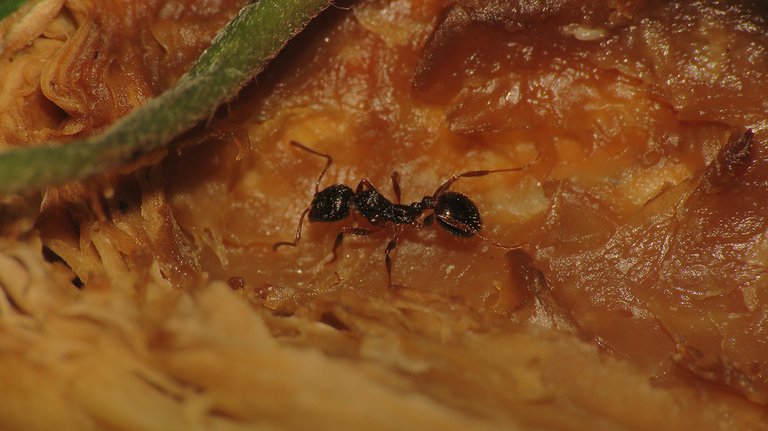
... were crawling around this smelly carcass of a mushroom.
The one shown in this photograph has found something edible on it. Or so it looks. A minute later, when the following photograph was taken ...
... the ant was exploring the gills on the less rotten part of the overturned cap.
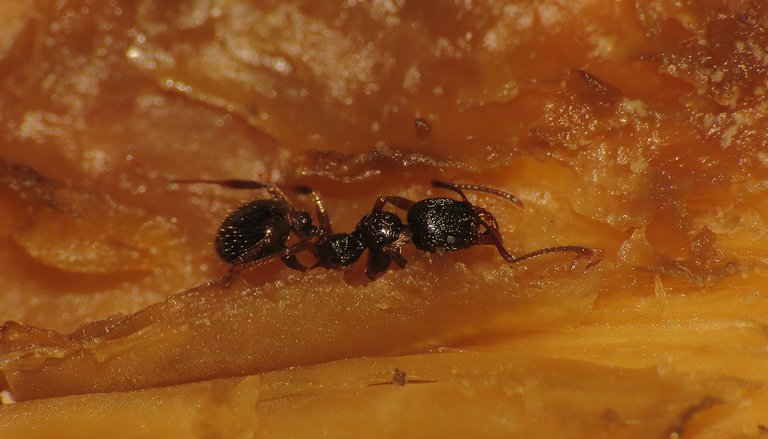
At one point one of the two ants found a nice place between the melting gills and stayed quiet there ...
... while the other ...
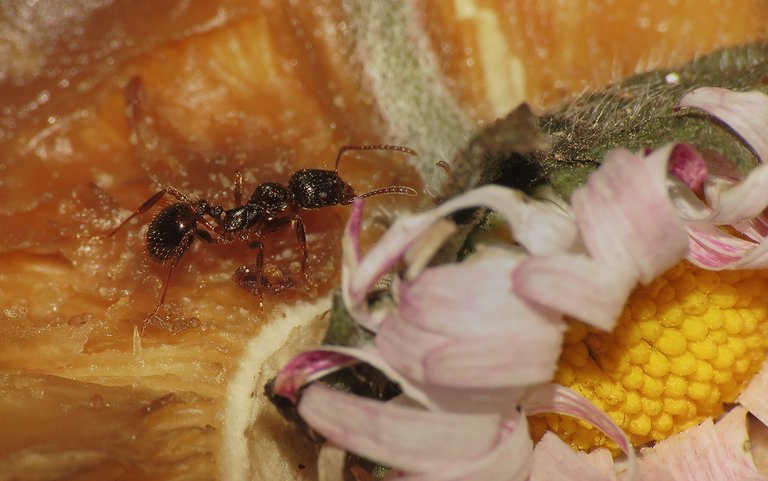
... passed by the dead flower, directed towards the dark place under the mushroom, where I couldn't follow him with the camera.
So I left this melting microcosm ...
... and continued exploring the living flowers that were still in good shape.
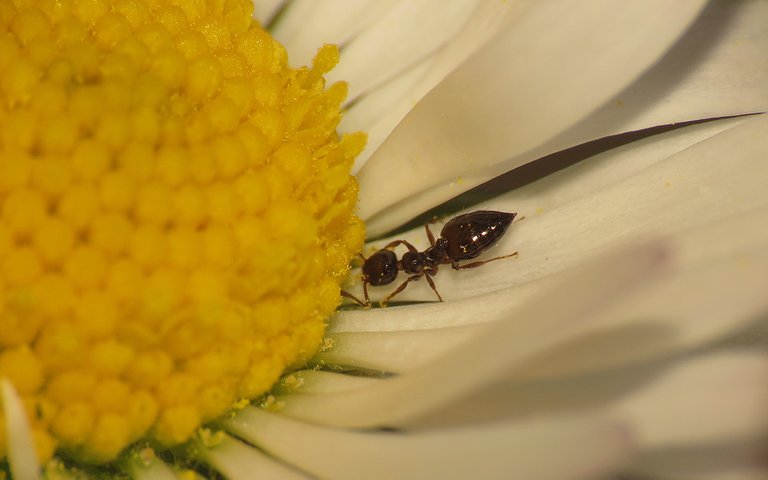
On one of them, I found a much smaller ant. This Plagiolepis pygmaea worker was collecting the nectar.
On the nearby flower ...
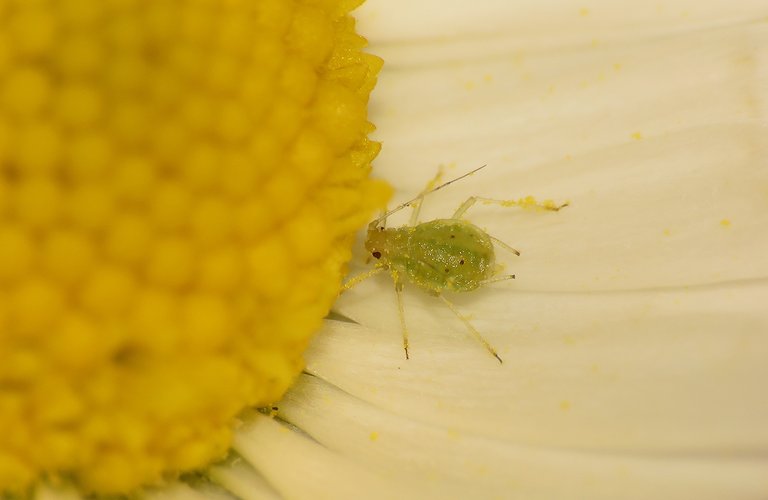
... an aphid was walking from the petals to the center.
A bit later, in the center of another daisy ...

... I found a nymph of some bug from the Miridae family. Can't tell you the name of the species.
This interesting, unusually shaped moth was photographed on the nearby Senecio vulgaris plant. The name of the species is Emmelina monodactyla. The family is Pterophoridae.
Five or six meters further, I came across a crew of Messor capitatus workers busy dismantling another aging Bellis sylvestris flower. Messor capitatus is a species from the Formicidae family.

Here you can see yet another Scaptomyza pallida on yet another southern daisy flower.
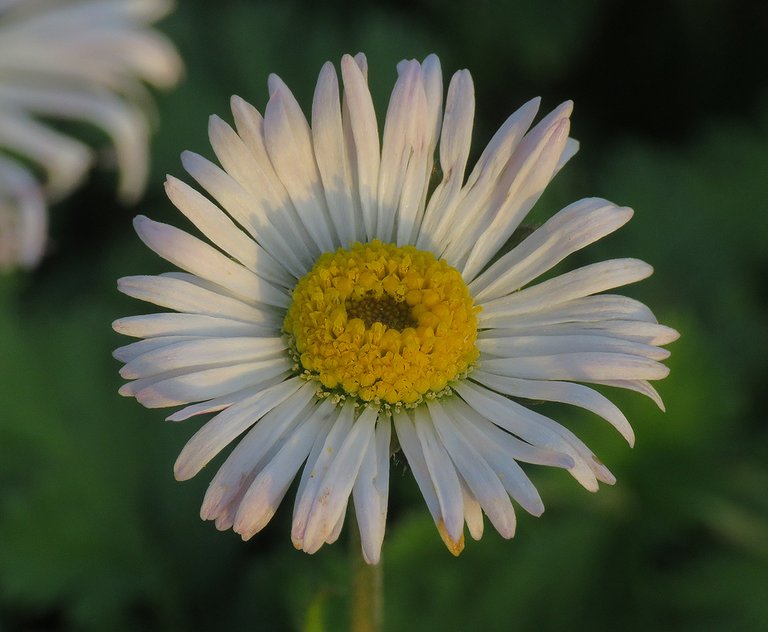
The yellow center of the flower shown in this photograph is slightly different, making this daisy stand out from the floral crowd.
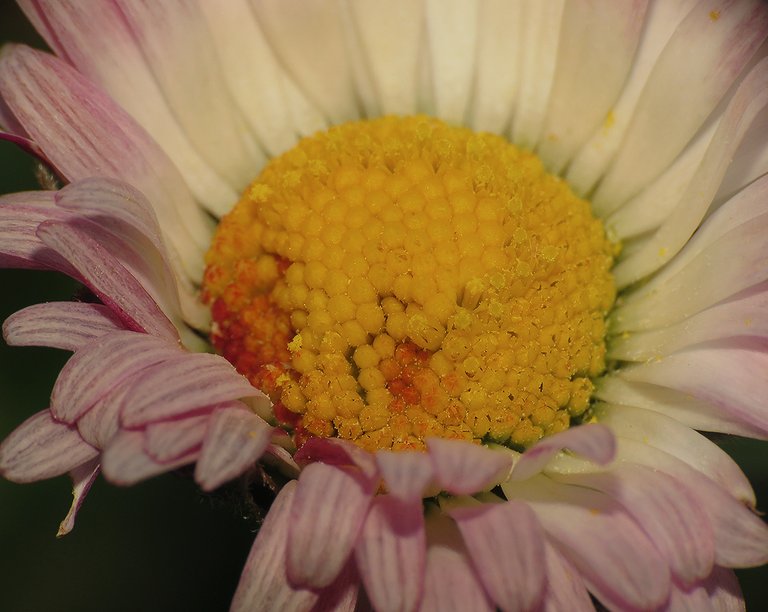
Here the yellow center has some unusual red areas.
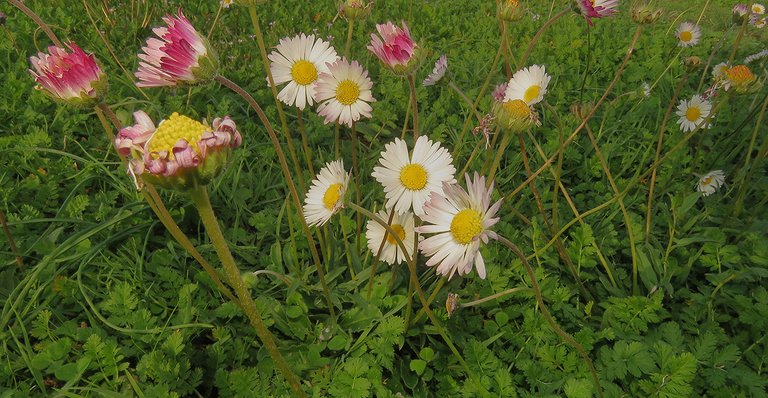
And that's it. I have nothing else to say and I'm also getting tired of all these daisies.
The following links will take you to the sites with more information about some of the protagonists of this post. I found some stuff about them there.
https://en.wikipedia.org/wiki/Bellis_sylvestris
https://en.wikipedia.org/wiki/Pezotettix_giornae
https://en.wikipedia.org/wiki/Messor_capitatus
https://en.wikipedia.org/wiki/Scaptomyza_pallida
https://en.wikipedia.org/wiki/Senecio_vulgaris
https://en.wikipedia.org/wiki/Longitarsus_exsoletus
https://en.wikipedia.org/wiki/Diamondback_moth
https://www.antweb.org/description.do?genus=plagiolepis&species=pygmaea&rank=species&countryName=Croatia
https://en.wikipedia.org/wiki/Emmelina_monodactyla
AS ALWAYS IN THESE POSTS ON HIVE, THE PHOTOGRAPHS ARE MY WORK - THE END.
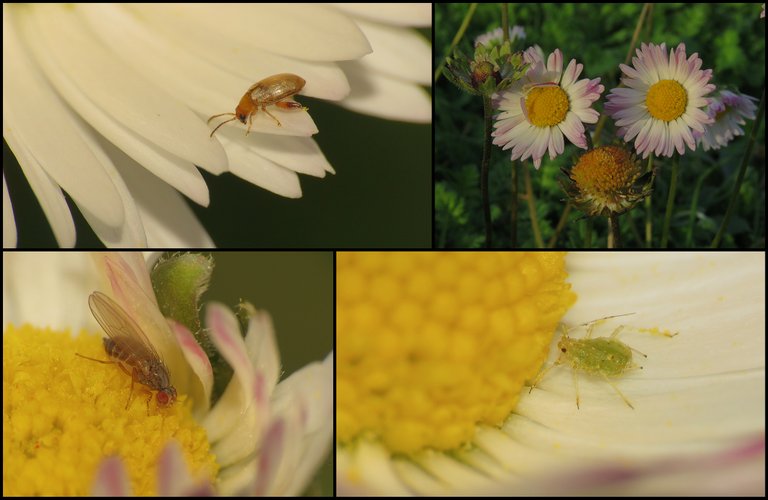

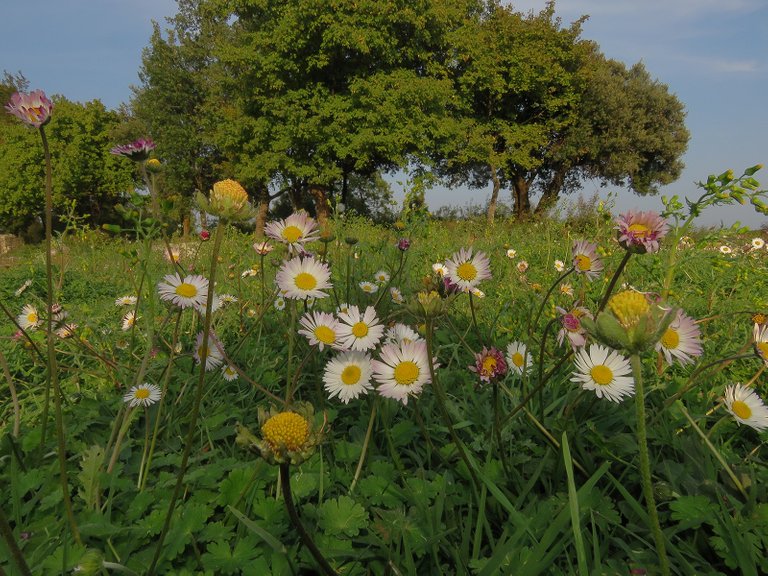
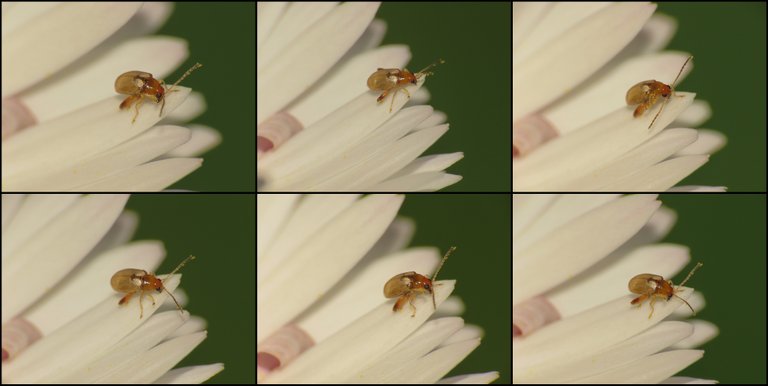
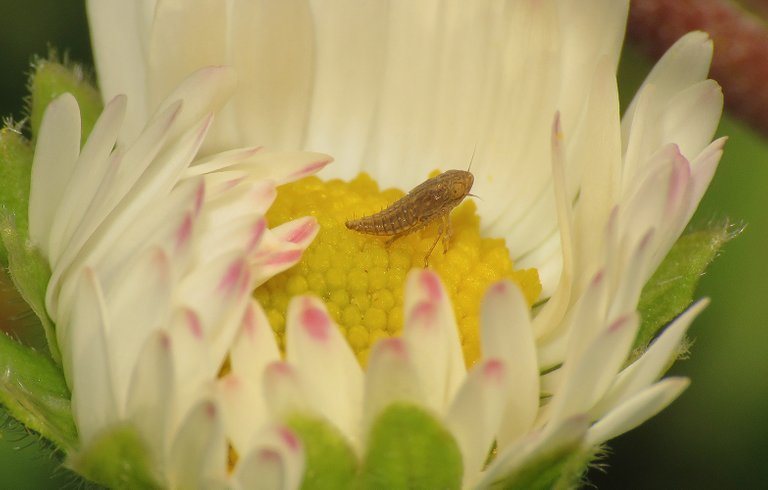
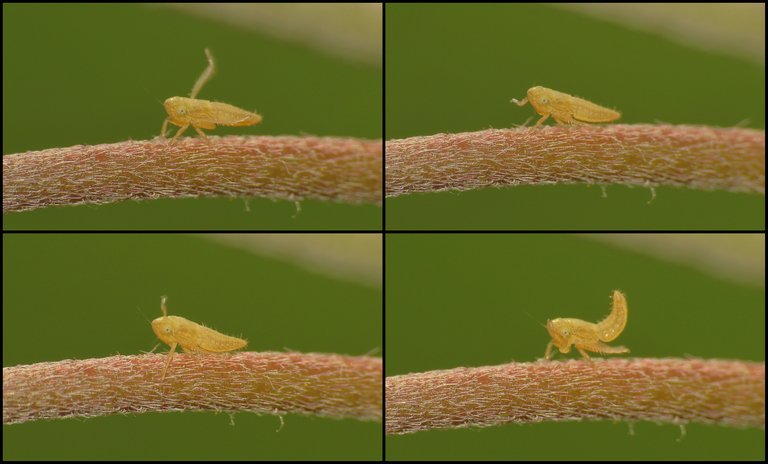
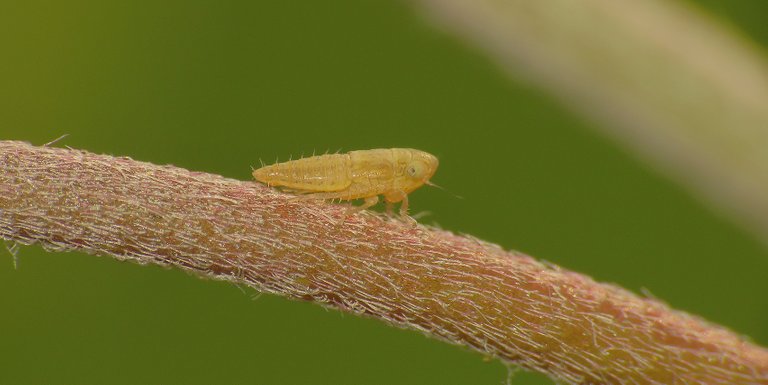

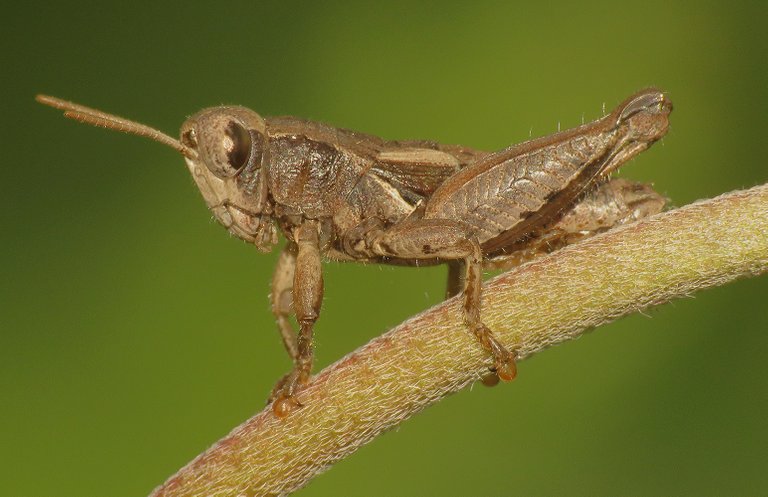

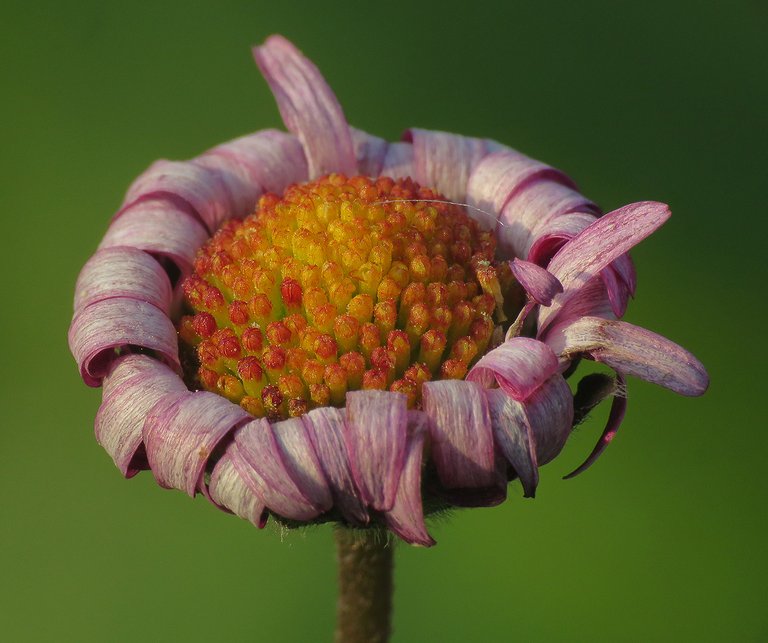
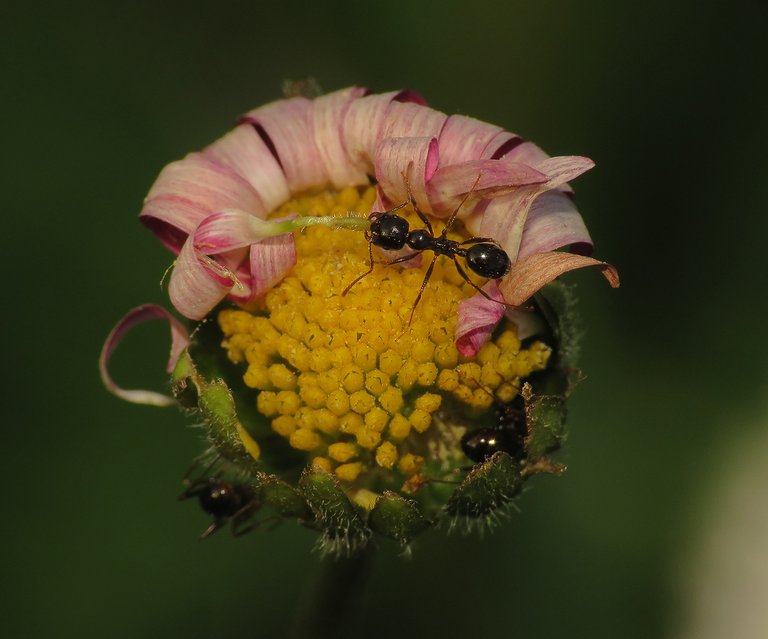
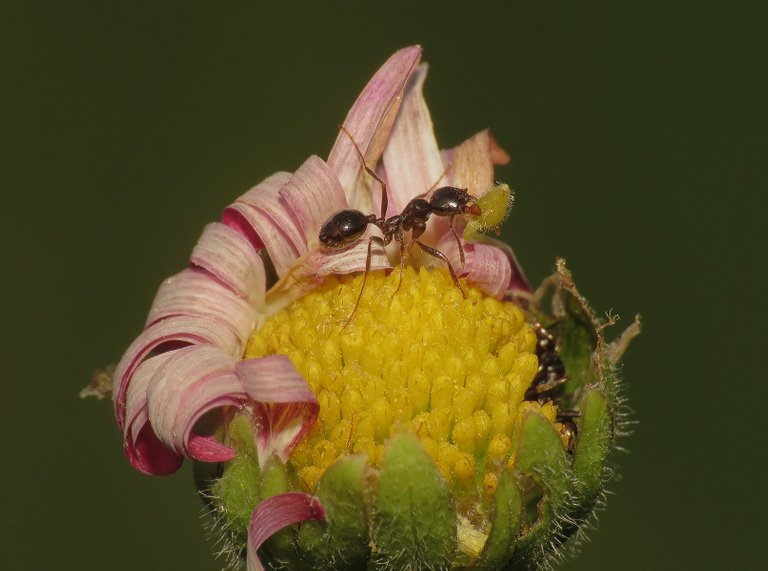
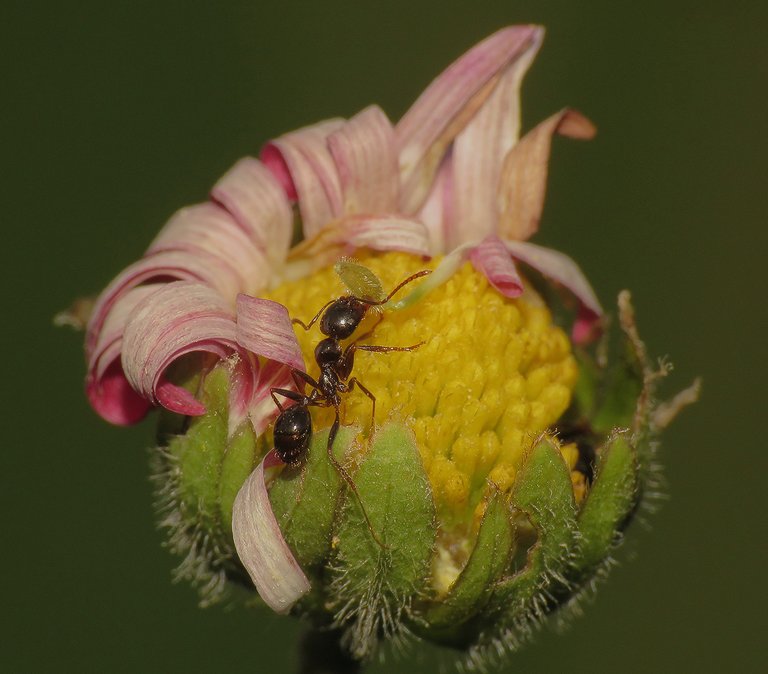
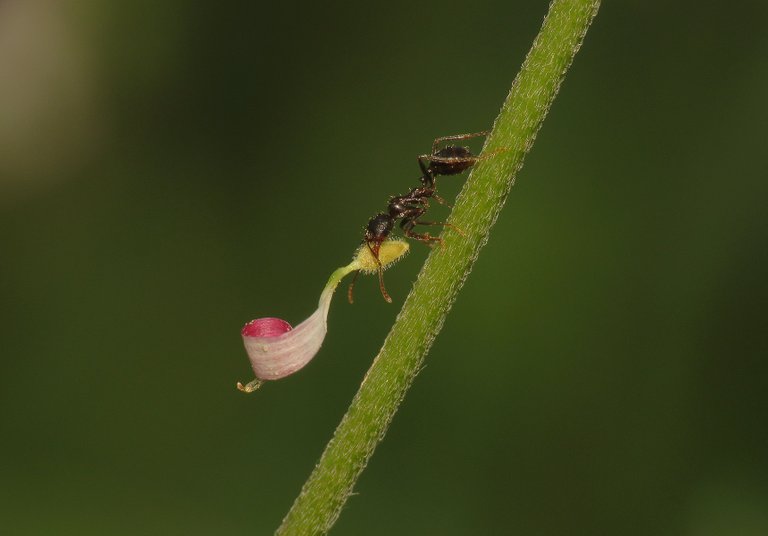
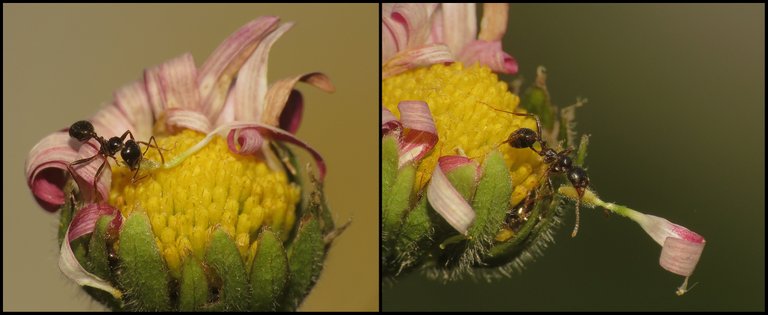
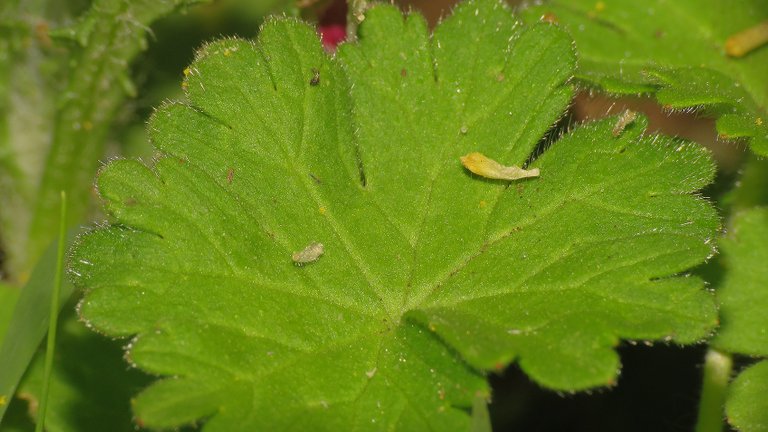
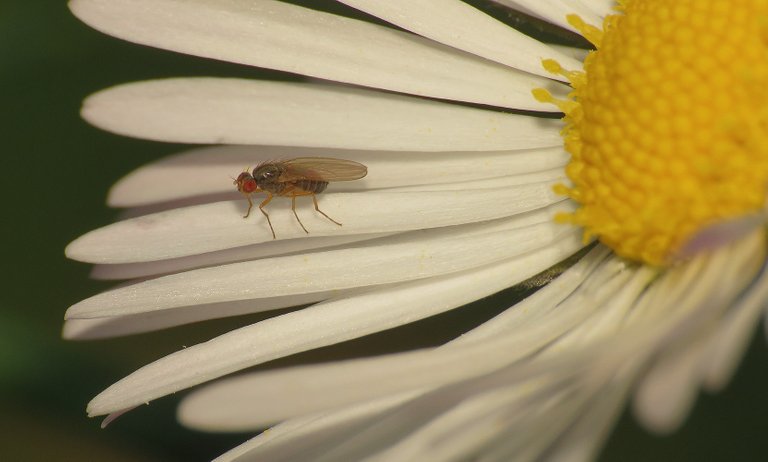


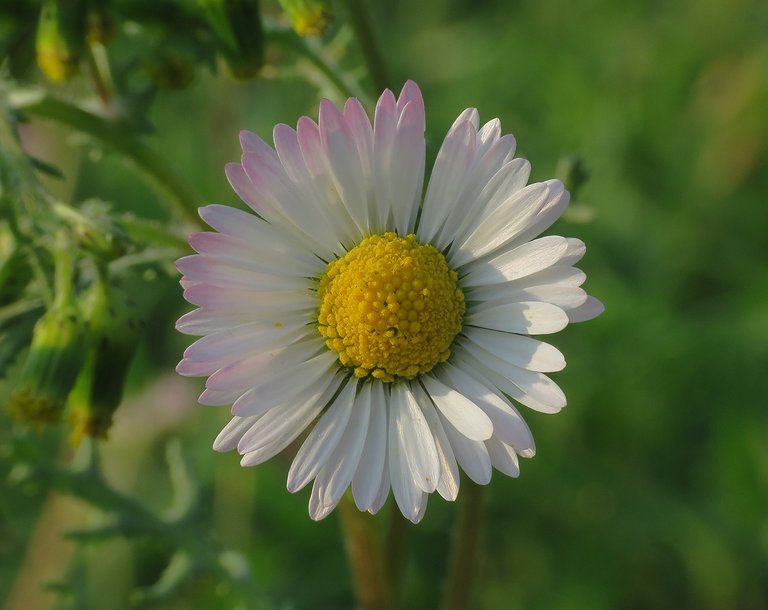
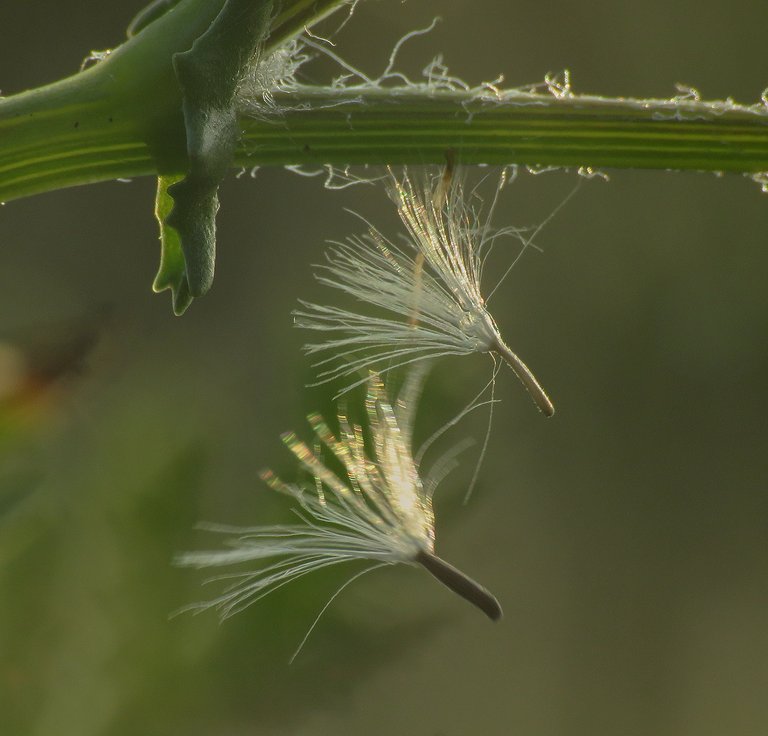
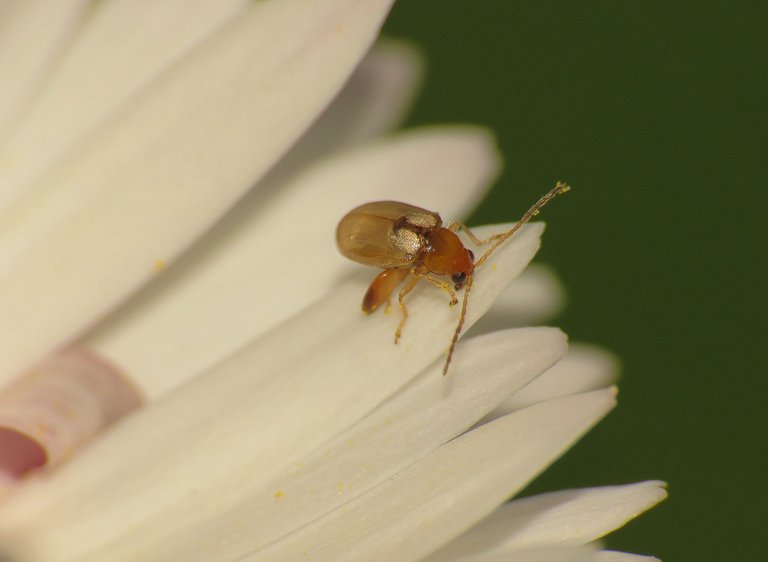
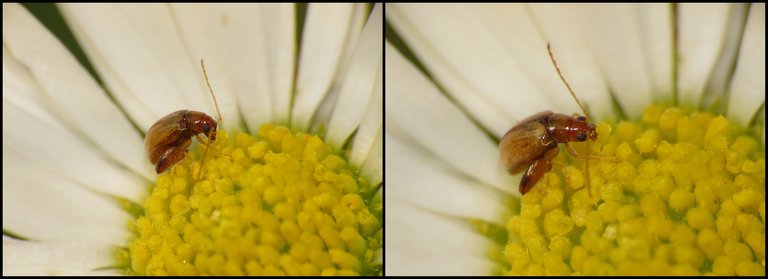
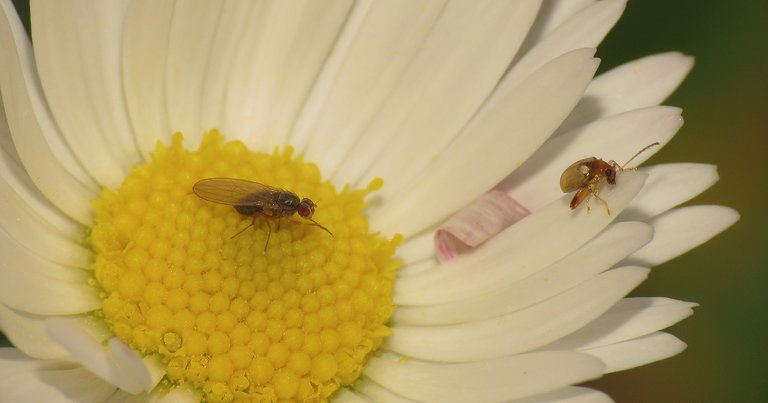

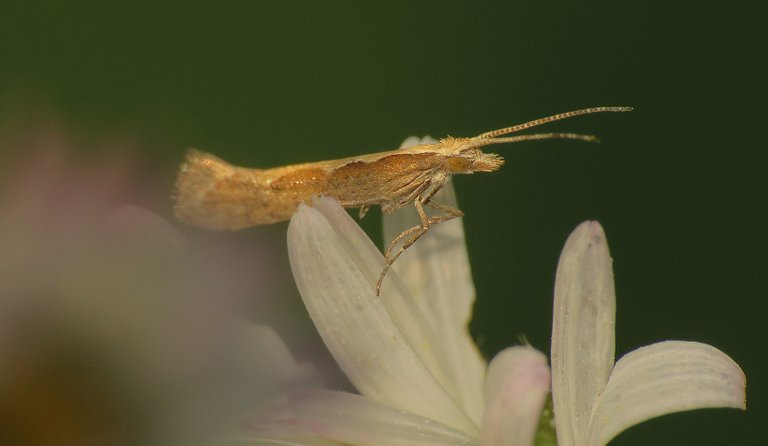
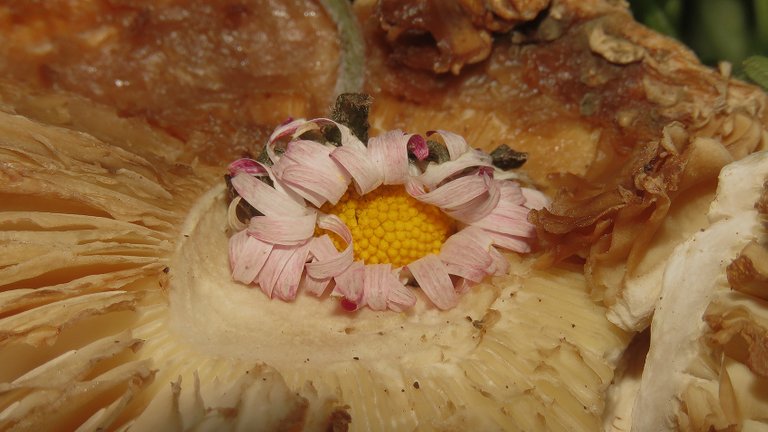
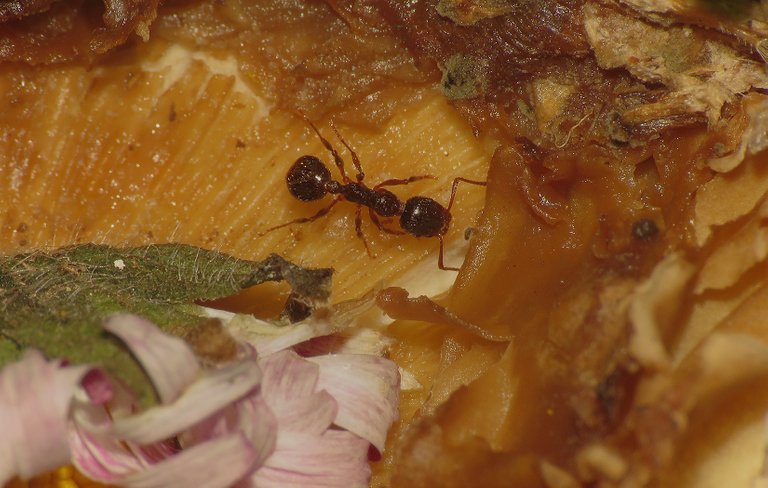

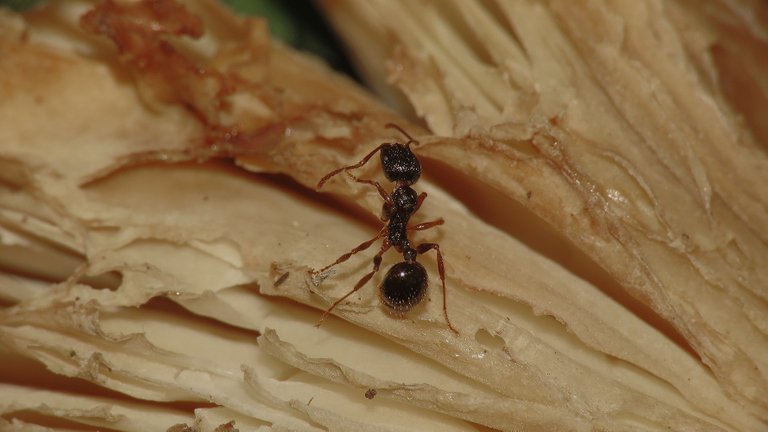
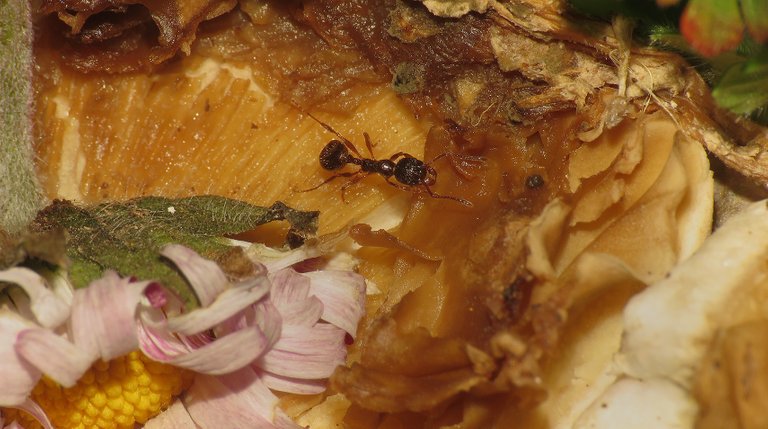
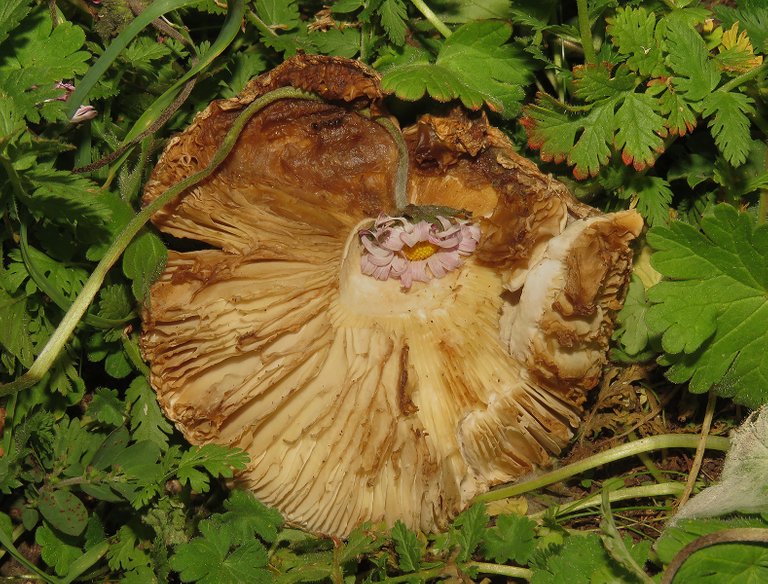

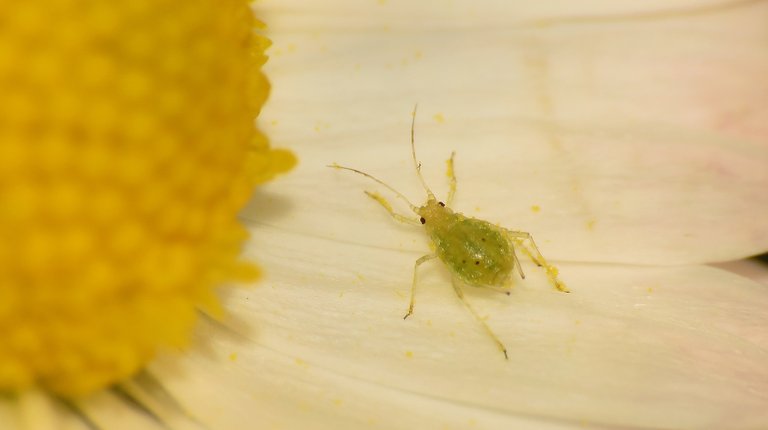
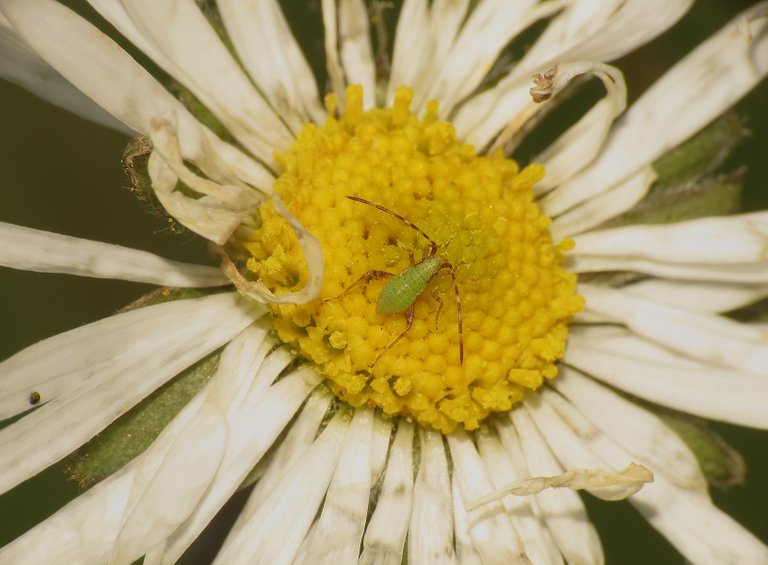
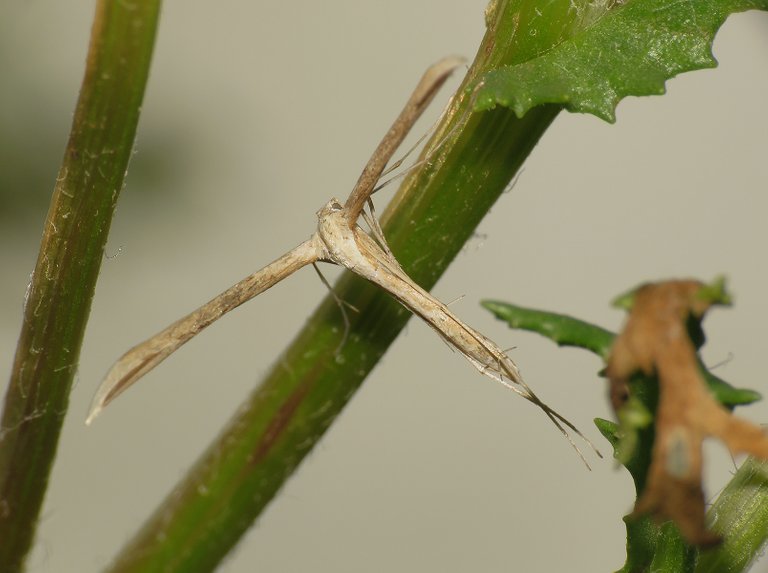
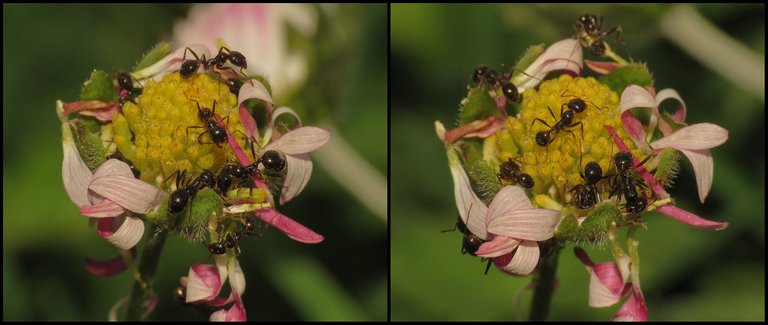
Thanks for your contribution to the STEMsocial community. Feel free to join us on discord to get to know the rest of us!
Please consider delegating to the @stemsocial account (85% of the curation rewards are returned).
You may also include @stemsocial as a beneficiary of the rewards of this post to get a stronger support.
We appreciate your hard work and dedication, your post has been manually curated on behalf of the community PETALS it will be added to the weekly curation report. Thanks and keep up the good work !!
Uuuj ove makro kidaju kao i uvijek.
!luv
(1/1) sent you LUV. wallet | market | tools | discord | community | <>< daily
wallet | market | tools | discord | community | <>< daily
HiveWiki
HiveBuzz.me NFT for Peace
🙂
Loved the variety of color these daisies had. I can’t believe they were still blooming in November.
Nice combination. I have the impression that Animalia steals the show most of the time, it tends to be more interesting. I heard a lot more about the evolution of animals than I do about the evolution of plants and fungi.
There is definitely more action with animals because they are running, flying, and swimming. Plants and fungi have many interesting aspects and survival strategies, many interesting ways in which they interact with the habitat, but all that stuff isn't so attractive to observe and is hard to show because it happens slowly.
And to see those ants crawling around the mushroom, interesting captures.
Thanks for sharing your great photographs with us 👋🏻😊
Have a wonderful Wednesday ☀️Such a beautiful flowers 🌸 @borjan and the amount of insects you found there. So cute.
Thanks 🙂Have a great Thursday.
You are welcome @borjan 👋🏻😊 thank you so much ☀️
These daisy shots were perfect! 🌼
What a beautiful place, I love the fields full of flowers and the variety of insects that live there
Beautiful shots, the southern daisy is very attractive
have a great dayHow are you dear friend @borjan good day
The pictures you show are amazing.
wonderful
A lot of Beautiful insect and flower. Bellis sylvestris flowers are plentiful where I live and they look pretty. All the photographs are very beautifully photographed by you.
the flowers and insects that you photograph are really very beautiful
Shot that's not right, sir, I'm always amazed by your work
Hello my friend. Your post is really awesome. Every picture you shared is wonderful. I love micro photography. I really liked each and every photo of yours. I really liked the photo of the ant carrying the flower piece.
Thank for sharing.
woooww pretty beautiful flowers are also very pretty. I see a lot of insects approaching it to absorb its essence. thanks for sharing with us.
Wow your macro shots are always amazing buddy.
i loved all those pretty colors of the flowers!
Beautiful flower